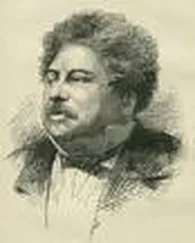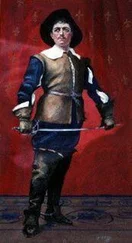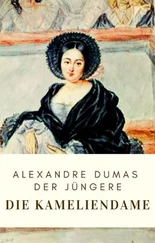Alexandre Dumas - Louise de la Valliere
Здесь есть возможность читать онлайн «Alexandre Dumas - Louise de la Valliere» — ознакомительный отрывок электронной книги совершенно бесплатно, а после прочтения отрывка купить полную версию. В некоторых случаях можно слушать аудио, скачать через торрент в формате fb2 и присутствует краткое содержание. Жанр: literature_19, foreign_antique, foreign_prose, на английском языке. Описание произведения, (предисловие) а так же отзывы посетителей доступны на портале библиотеки ЛибКат.
- Название:Louise de la Valliere
- Автор:
- Жанр:
- Год:неизвестен
- ISBN:нет данных
- Рейтинг книги:5 / 5. Голосов: 1
-
Избранное:Добавить в избранное
- Отзывы:
-
Ваша оценка:
- 100
- 1
- 2
- 3
- 4
- 5
Louise de la Valliere: краткое содержание, описание и аннотация
Предлагаем к чтению аннотацию, описание, краткое содержание или предисловие (зависит от того, что написал сам автор книги «Louise de la Valliere»). Если вы не нашли необходимую информацию о книге — напишите в комментариях, мы постараемся отыскать её.
Louise de la Valliere — читать онлайн ознакомительный отрывок
Ниже представлен текст книги, разбитый по страницам. Система сохранения места последней прочитанной страницы, позволяет с удобством читать онлайн бесплатно книгу «Louise de la Valliere», без необходимости каждый раз заново искать на чём Вы остановились. Поставьте закладку, и сможете в любой момент перейти на страницу, на которой закончили чтение.
Интервал:
Закладка:
Alexandre Dumas
Louise de la Valliere
Introduction:
In the months of March-July in 1844, in the magazine Le Siecle, the first portion of a story appeared, penned by the celebrated playwright Alexandre Dumas. It was based, he claimed, on some manuscripts he had found a year earlier in the Bibliotheque Nationale while researching a history he planned to write on Louis XIV. They chronicled the adventures of a young man named D’Artagnan who, upon entering Paris, became almost immediately embroiled in court intrigues, international politics, and ill-fated affairs between royal lovers. Over the next six years, readers would enjoy the adventures of this youth and his three famous friends, Porthos, Athos, and Aramis, as their exploits unraveled behind the scenes of some of the most momentous events in French and even English history.
Eventually these serialized adventures were published in novel form, and became the three D’Artagnan Romances known today. Here is a brief summary of the first two novels:
The Three Musketeers (serialized March – July, 1844): The year is 1625. The young D’Artagnan arrives in Paris at the tender age of 18, and almost immediately offends three musketeers, Porthos, Aramis, and Athos. Instead of dueling, the four are attacked by five of the Cardinal’s guards, and the courage of the youth is made apparent during the battle. The four become fast friends, and, when asked by D’Artagnan’s landlord to find his missing wife, embark upon an adventure that takes them across both France and England in order to thwart the plans of the Cardinal Richelieu. Along the way, they encounter a beautiful young spy, named simply Milady, who will stop at nothing to disgrace Queen Anne of Austria before her husband, Louis XIII, and take her revenge upon the four friends.
Twenty Years After (serialized January – August, 1845): The year is now 1648, twenty years since the close of the last story. Louis XIII has died, as has Cardinal Richelieu, and while the crown of France may sit upon the head of Anne of Austria as Regent for the young Louis XIV, the real power resides with the Cardinal Mazarin, her secret husband. D’Artagnan is now a lieutenant of musketeers, and his three friends have retired to private life. Athos turned out to be a nobleman, the Comte de la Fere, and has retired to his home with his son, Raoul de Bragelonne. Aramis, whose real name is D’Herblay, has followed his intention of shedding the musketeer’s cassock for the priest’s robes, and Porthos has married a wealthy woman, who left him her fortune upon her death. But trouble is stirring in both France and England. Cromwell menaces the institution of royalty itself while marching against Charles I, and at home the Fronde is threatening to tear France apart. D’Artagnan brings his friends out of retirement to save the threatened English monarch, but Mordaunt, the son of Milady, who seeks to avenge his mother’s death at the musketeers’ hands, thwarts their valiant efforts. Undaunted, our heroes return to France just in time to help save the young Louis XIV, quiet the Fronde, and tweak the nose of Cardinal Mazarin.
The third novel, The Vicomte de Bragelonne (serialized October, 1847 – January, 1850), has enjoyed a strange history in its English translation. It has been split into three, four, or five volumes at various points in its history. The five-volume edition generally does not give titles to the smaller portions, but the others do. In the three-volume edition, the novels are entitled The Vicomte de Bragelonne, Louise de la Valliere, and The Man in the Iron Mask. For the purposes of this etext, I have chosen to split the novel as the four-volume edition does, with these titles: The Vicomte de Bragelonne, Ten Years Later, Louise de la Valliere, and The Man in the Iron Mask. In the first two etexts:
The Vicomte de Bragelonne (Etext 2609): It is the year 1660, and D’Artagnan, after thirty-five years of loyal service, has become disgusted with serving King Louis XIV while the real power resides with the Cardinal Mazarin, and has tendered his resignation. He embarks on his own project, that of restoring Charles II to the throne of England, and, with the help of Athos, succeeds, earning himself quite a fortune in the process. D’Artagnan returns to Paris to live the life of a rich citizen, and Athos, after negotiating the marriage of Philip, the king’s brother, to Princess Henrietta of England, likewise retires to his own estate, La Fere. Meanwhile, Mazarin has finally died, and left Louis to assume the reigns of power, with the assistance of M. Colbert, formerly Mazarin’s trusted clerk. Colbert has an intense hatred for M. Fouquet, the king’s superintendent of finances, and has resolved to use any means necessary to bring about his fall. With the new rank of intendant bestowed on him by Louis, Colbert succeeds in having two of Fouquet’s loyal friends tried and executed. He then brings to the king’s attention that Fouquet is fortifying the island of Belle-Ile-en-Mer, and could possibly be planning to use it as a base for some military operation against the king. Louis calls D’Artagnan out of retirement and sends him to investigate the island, promising him a tremendous salary and his long-promised promotion to captain of the musketeers upon his return. At Belle-Isle, D’Artagnan discovers that the engineer of the fortifications is, in fact, Porthos, now the Baron du Vallon, and that’s not all. The blueprints for the island, although in Porthos’s handwriting, show evidence of another script that has been erased, that of Aramis. D’Artagnan later discovers that Aramis has become the bishop of Vannes, which is, coincidentally, a parish belonging to M. Fouquet. Suspecting that D’Artagnan has arrived on the king’s behalf to investigate, Aramis tricks D’Artagnan into wandering around Vannes in search of Porthos, and sends Porthos on an heroic ride back to Paris to warn Fouquet of the danger. Fouquet rushes to the king, and gives him Belle-Isle as a present, thus allaying any suspicion, and at the same time humiliating Colbert, just minutes before the usher announces someone else seeking an audience with the king.
Ten Years Later (Etext 2681): As 1661 approaches, Princess Henrietta of England arrives for her marriage, and throws the court of France into complete disorder. The jealousy of the Duke of Buckingham, who is in love with her, nearly occasions a war on the streets of Le Havre, thankfully prevented by Raoul’s timely and tactful intervention. After the marriage, though, Monsieur Philip becomes horribly jealous of Buckingham, and has him exiled. Before leaving, however, the duke fights a duel with M. de Wardes at Calais. De Wardes is a malicious and spiteful man, the sworn enemy of D’Artagnan, and, by the same token, that of Athos, Aramis, Porthos, and Raoul as well. Both men are seriously wounded, and the duke is taken back to England to recover. Raoul’s friend, the Comte de Guiche, is the next to succumb to Henrietta’s charms, and Monsieur obtains his exile as well, though De Guiche soon effects a reconciliation. But then the king’s eye falls on Madame Henrietta during the comte’s absence, and this time Monsieur’s jealousy has no recourse. Anne of Austria intervenes, and the king and his sister-in-law decide to pick a young lady with whom the king can pretend to be in love, the better to mask their own affair. They unfortunately select Louise de la Valliere, Raoul’s fiancee. While the court is in residence at Fontainebleau, the king unwitting overhears Louise confessing her love for him while chatting with her friends beneath the royal oak, and the king promptly forgets his affection for Madame. That same night, Henrietta overhears, at the same oak, De Guiche confessing his love for her to Raoul. The two embark on their own affair. A few days later, during a rainstorm, Louis and Louise are trapped alone together, and the whole court begins to talk of the scandal while their love affair blossoms. Aware of Louise’s attachment, the king arranges for Raoul to be sent to England for an indefinite period.
Читать дальшеИнтервал:
Закладка:
Похожие книги на «Louise de la Valliere»
Представляем Вашему вниманию похожие книги на «Louise de la Valliere» списком для выбора. Мы отобрали схожую по названию и смыслу литературу в надежде предоставить читателям больше вариантов отыскать новые, интересные, ещё непрочитанные произведения.
Обсуждение, отзывы о книге «Louise de la Valliere» и просто собственные мнения читателей. Оставьте ваши комментарии, напишите, что Вы думаете о произведении, его смысле или главных героях. Укажите что конкретно понравилось, а что нет, и почему Вы так считаете.












